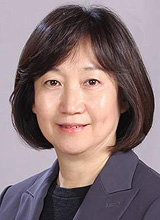Real estate policies are touchstone of gov't capabilities
Real estate policies are touchstone of gov't capabilities
Posted December. 26, 2019 07:39,
Updated December. 26, 2019 07:41

Many people must have felt despair when President Moon Jae-in commented that “the real estate prices are stabilizing” in the “Dialogue with the People” session last month. Tenants in Seoul have witnessed apartment prices jump by 50% in the past three to four years and even escalate by 500 million won to 1 billion won. The majority of people who have failed to jump on the bandwagon are in despair, lamenting that they have missed the opportunity to own homes in Seoul. Over 20,000 people recently applied for a housing subscription opportunity in the Seoul metropolitan area where only 187 households were available. What is blocking the president’s eyes and ears?
The government has announced 18 different types of real estate policies over the last two and a half years. Despite such efforts, housing prices have steadily climbed over the period, with the average medium priced apartment in Seoul increasing from 600 million to 870 million won. In fact, 270 million won is a hefty amount that is difficult to save up for an average household, barely attainable only after working and saving up for one or two decades. According to the Korea Appraisal Board, a public institution, apartment prices in Seoul rose 10% on average, while KB Kookmin Bank says Seoul apartment prices increased by 20%. The discrepancy itself is a problem. Without accurate analysis and statistic data in place, there would be no proper policies.
The number of households owning multiple houses has increased as well. Last year, the number of multiple home owners reached 2.2 million, 73,000 higher than the previous year. In 2017, the government tightened lending conditions while expanding all sorts of benefits to rental businesses: multiple house owners. Faced with criticism, the government downsized some of the benefits in its latest measure but it is still not enough to encourage these multiple home owners to sell their property. As rental businesses are required to own properties for a certain period, they are the least likely to put their offers on the market.
The number of households that do not own houses in Seoul amount to 2 million, which is more than half of the total population in Seoul. Housing distribution rate across the country exceeds 100%, but with many houses in Korea run-down they are at risk of demolition, which means that the number of new houses continues to be in shortage. To help residents achieve their hopes of having their own homes, the government must supply houses in the areas where people prefer to live, whether by encouraging multiple home owners to sell or offering initiatives to reconstruct old apartment complexes or communities.
It is necessary to raise property holding tax for multiple owners while tightening lending conditions, curbing speculative demand. However, it is questionable whether the government’s efforts have been timely. The government needs to come up with a solution aligned across various ministries and do away the lack of coordination it has shown so far. A combination of sophisticated policies needs to be in place, risking the chance that it encourages unearned income.
Skyrocketing housing prices in the Seoul metropolitan area, home to half of the nation's population, will continue to weigh down the lives of the working class, despite the government’s policies to increase minimum wage and reduce income inequality. We need a government that has a “real capability” to practically stabilize housing prices and support the working class to own homes. Going forward, real estate trends will determine the government's policy capabilities.
ysshin@donga.com
Headline News
- Med professors announce intention to leave hospitals starting Thursday
- Bridge honoring Sgt. Moon Jae-sik unveiled in Pennsylvania
- Chief of Staff Chung tells presidential secretaries to stay away from politics
- US FTC bans noncompete agreements
- N. Korea launches cyberattacks on S. Korea's defense companies







